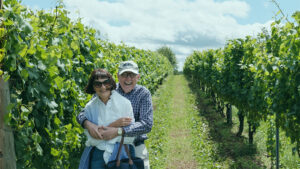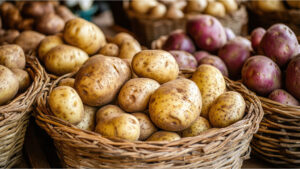The cleverest people in the country are in the country. They’re not on university campuses. They’re not in technology parks. They’re not in CBD corner offices.
Australia’s cleverest people are out in a field or orchard or paddock somewhere. They’re our farmers. Yes, we might be a little biased. However, we’d like to present the evidence to support our claim that as a group, farmers don’t get the recognition they deserve for innovation.
From the very start of large-scale agriculture in Australia, farmers innovated to address local issues.
The stump jump plough was invented because standard plough blades kept breaking on the tough mallee tree roots on the farm of Richard Smith at Kalkabury in South Australia.
The emergence of wheat farming combined with the sheer size of Australian wheat farms meant that old techniques of harvesting, threshing and winnowing wheat were inadequate. In quick succession, wheat farmers devised new machines to simplify and accelerate the process. The Ridley Stripper was followed by the Sunshine Harvester and then the Header Harvester.
The other farm product that rivalled wheat for importance was wool. Shearing tens of thousands of sheep with blades was backbreaking work for shearers – and not much fun for sheep. The Wolesley Shearing Machine revolutionised the wool industry and produced better fleeces.
A Geelong farmer’s wife can take the credit for the development of the ute. She wrote a letter to Ford asking for a vehicle to take her to church on Sunday and pigs to market on Monday.
These are all significant inventions. However, on a more modest scale every farmer is frequently forced to improvise simply because their remoteness makes it difficult to buy a new part whenever something breaks.
So, let’s look at a couple of innovations that you mightn’t know of.
If you’ve bought fresh ginger, you’ll know that the plants have knobbly irregular roots. If you’ve grown ginger, you’ll know that with age, these roots become tougher and difficult to dig. At Cherry Creek Estate, they use a method that’s being adopted by other forward-thinking farmers. They grow their plants in individual bags. Then they go further.
Something you mightn’t know about ginger is that the plants become dormant through winter before bursting back into life again when the temperature rises.
At Cherry Creek, solar-powered sensors placed in these bags monitor activity. They can indicate if a plant is still growing and still absorbing nutrients from the soil. The information from the sensors is transmitted to the monitoring software’s dashboard. There’s no guesswork.
Humans have been eating ginger since at least 500BC. Growing it the way they do at Cherry Creek Estate brings this ancient food into the digital age.
Another innovator is 4th generation farmer Bruce Maynard on his property Willydah near Narromine, New South Wales. What Bruce has done here is rethink farming practices that have been common for 10,000 years. These include preparing a field for planting by killing native grasses, sowing when there’s moisture in the soil, adding fertiliser to enrich the soil, using chemicals to kill weeds and insects, and tilling the soil between crops.
Inspired by observing the biodiversity in grasses on his property, Bruce was reluctant to remove this grass cover to plant a new crop. He experimented with planting directly into the grass field – and planting when the topsoil was dry.
When the rains came, Bruce observed that his seeds sprouted almost straight away, with 3-4 centimetres of growth several days after rainfall – while other farmers were just getting started.
He noticed two other things changed with this new sowing regime.
Soil compaction was dramatically reduced. And weeds were kept to a minimum.
Bruce gave his new regime a name, No Kill Cropping. For other farmers interested in adopting Bruce’s innovation, he defined the five principles:
- Sow when the soil is dry
- Use straight-running disc machinery to plant seeds
- Don’t apply chemical pesticides
- Don’t apply chemical herbicides
- Use grazing to return nutrients to the soil
You can read more in this case study.
Here at IIF, we really do believe that farmers are some of the cleverest people around. We always get excited to partner with farmers who are trying something new. Our members also seem to be keen to support our innovative farmers. When we offer products from their farms, members snap them up. If you’re not an IIF Coop member, and you like the idea of supporting our farmers, you can register your interest below.




